| ICELAND - JUNE 1997 (page 1/2) |
| Friday, June 13th My friend Eric and I caught an afternoon flight from Detroit to New York, where we met up with another friend, Martha, who flew in from Austin. Hit the duty free to stock up on liquor ( a must when traveling to Scandinavia), and then caught our Icelandair flight to Reykjavik. Didn’t bother sleeping, since it was only a 5 hour flight. |
|
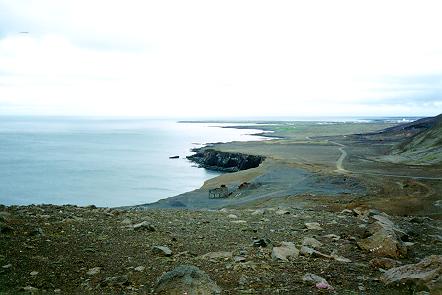 |
Saturday, June 14th We arrived very early in the morning, and picked up our rented Toyota Corolla, which we would have for the next 5 days. Lacking any real specific plans, we headed to the Blue Lagoon, which of course was closed this early in the morning. So we continued southward until we hit the Atlantic at the fishing village Grindavik, where everyone was of course asleep it being early Saturday morning. The obvious thing to do, since everything was closed, was to take the Corolla off-roading, to see what it could handle. First we headed east, until the road became impassable, where we got out and enjoyed the view over the Atlantic. Next we headed back into Grindavik, and then westward, on a road that is hard to describe, other than it was one of the funnest, twistiest, hilliest dirt roads I have ever driven, and it was smooth enough that at the speeds we where going it was a good thing no other cars came from the other direction (or maybe it was a one way road?). |
| As we approached the far southwest corner of Iceland, we noticed steam coming up from the ground just off the road, and we drove up to a series of boiling mud pools and vents. It was quite amazing to be able to walk around them (carefully) in peace, with not another soul nearby. The attacking Arctic Terns where another story however, and we soon had to leave since each dive bomb towards our heads was getting closer and closer. After a brief viewing of the Atlantic, along with Iceland’s oldest lighthouse, and the island Eldey in the distance, we headed north along the coast back towards Keflavik, and then southeast back to the Blue Lagoon. After an enjoyable couple hours in the extremely hot water of the lagoon, we headed towards highway 1, and onward to the east along the south coast of Iceland. | 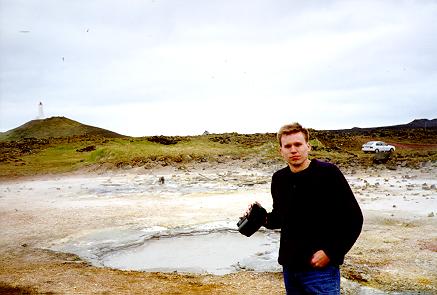 |
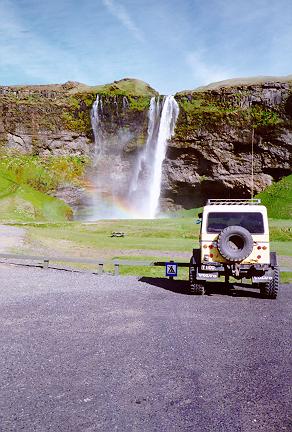 |
Once we had left the Reykjanes Peninsula, the weather picked up dramatically, and soon we saw a beautiful waterfall in the distance. We pulled over, meeting an Icelandic photographer and his Volvo off road vehicle, who was the only other person around. The falls, Seljalandsfoss, are one of the more accessible ones that carry water from the Eyjafjallajökull ice cap. |
| A short trail runs behind Seljalandsfoss, which provides a breathtaking (albeit a bit wet) view from behind the falls. | 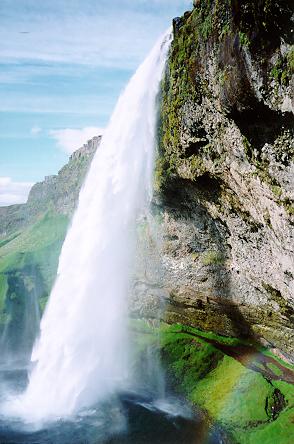 |
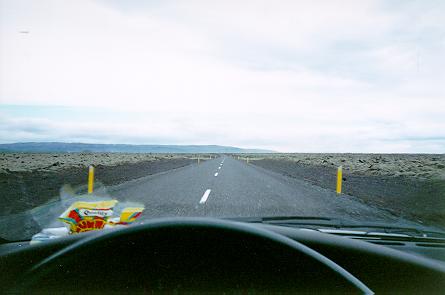 |
Sunday, June 15th After a nights rest, we cruised along the south coast passing more waterfalls, moss covered rock fields, small mountains, beaches, volcanic wastelands, etc. You name it, it was there, expect for traffic. As we entered Skeidararsandur, highway 1 suddenly ceased to exist, and we ended up on a very bumpy and dusty temporary road. This is the area that was devastated by flooding from the October 1996 volcanic eruption at Vatnajökul. Nothing much here for miles, other than volcanic dust and numerous river crossings. With the windows and vents closed, we drove through the beautiful and mysterious black terrain. Eventually we pulled into Skaftafell national park, which we had heard could get very crowded. To our surprise the campground was relatively small, and fairly empty. |
| After securing a campsite and pitching our tents, we grabbed a delicious lunch before setting out on a hike into the park itself. We chose the Kristinartindar trail, which is estimated to take 5 ½ to 6 ½ hours. The sun was still shinning, so we went with shorts and T-shirts, though we packed sweaters with us. The hike is relatively strenuous, taking you from near sea level to about 1100 meters. We first crossed over Hundafoss, "Dogfalls", so named because travelers riding to the nearby farm used to have to ford this river near the edge of the falls, and during high water, dogs where known to have often been washed over the edge. One of the first stops along the trail was the unusual looking Svartifoss waterfall. The water here plummets over basalt columns which were formed by gradual cooling of a layer of molten lava. | 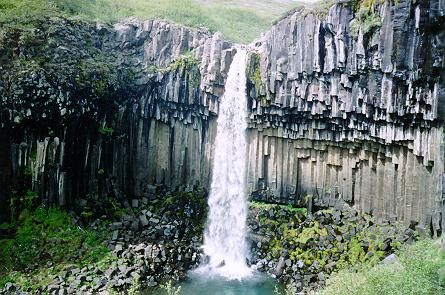 |
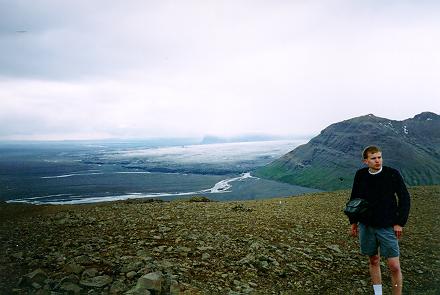 |
Beyond Svartifoss, we did not see any other people in the park for the rest of the day. As we continued higher, less and less vegetation appeared on the ground, eventually disappearing altogether as the rubble replaced any traces of soil. We hiked onward along the trail, eventually reaching Nyrdrihnaukur, at 706 meters offering an incredible view of the Morsardalur valley below. |
|
At this point, Martha headed across the plain, and back towards the campground, while Eric and I tried to find a trail to take us the rest of the way up the mountain. Eventually we found somewhat of a trail leading up in a cleft between the twin peaks of the mountain. As we climbed this steep trail, it started to snow! We realized that we didn’t have any proper equipment for the type of climbing we where doing, but really wanted to see the view from the top. After a bit of a risky crossing of a steep ice flow, we finally made it to the top. From here we could see the Skaftafellsjökull valley glacier to the east, almost directly below us and the Morsarjökul glacier to the west. It started snowing quite hard, as we finished of the last of our bread and cheese. |
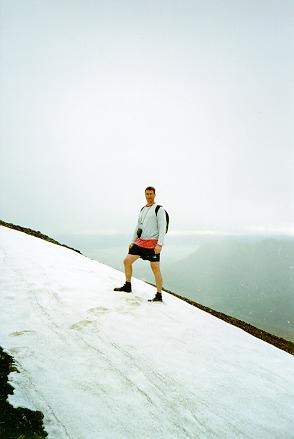 |
| Continue on to the next page... | |